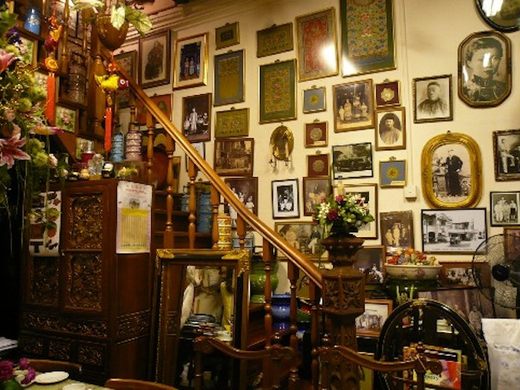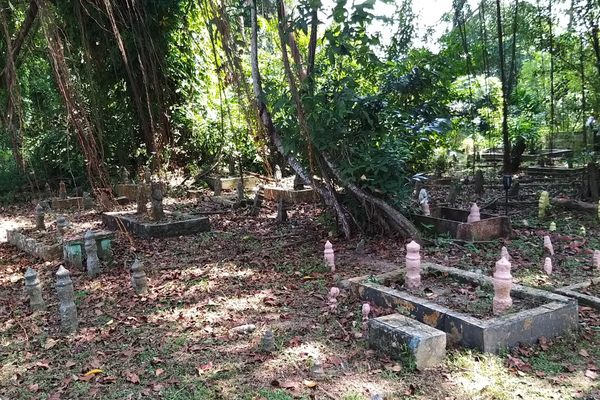Katong Antique House
This jam-packed Singapore antique museum preserves the fading remnants of a uniquely mixed culture.
Decorated with intricately painted green tiles and painted a cheery yellow, the Katong Antique House is a treasure trove of Peranakan antiques.
The two-storied shop house is located in Katong area in the east of Singapore, where many old Peranakan families live. Run by Mr. Peter Wee, a fourth generation Peranakan, the Katong Antique House is more than a museum for Baba-Nyonya artifacts and a shop selling Peranakan goods, it is a tableau of the Peranakan presence in Singapore.
The Peranakans refer to the descendants of Chinese who immigrated to the Malayan Peninsula and the Indonesia Archipelago between the 13th and 15th century. These immigrants adopted some Malay customs and traditions while retaining some of their own; some say they retained the original Chinese traditions much better than the Chinese who remained in China as they were unaffected by the eradication of culture during the Cultural Revolution. They eventually went on to develop their own culture and language based on that of their adopted countries. When Singapore was colonized in 1819, some Peranakans moved to the tiny island state and befriended the English colonialists, thus beginning their history in Singapore which Mr. Peter Wee has spent his life striving to preserve.
Adorning the walls of the old shophouse inherited from Wee’s maternal grandfather are Peranakan prints and portraits. Peranakan crockery, costumes, and furniture fill the space. The influences and origins of the Peranakan culture are evident in these antiques. The baju panjangs (long dress) and batik sarongs are reminiscent of the native Malay dresses. The intricate kasot manek, handmade shoes with beaded designs, have beautiful motifs of fish, flowers, phoenixes and dragons, similar to the motifs found in Chinese designs. These motifs are found all over the furniture in the store, in the legs of tables and sides of cupboards, each associated with something the Chinese value like prosperity, fertility, longevity and wealth.
Wee has dedicated most of his life salvaging these treasures from the bins of Peranakan families whose young do not know of their family histories. His small museum-store preserves the remnants of Peranakan heritage abandoned by the unsentimental nature of the modern local. If you are ever in Singapore, this place is a must for those wishing to examine an integral part of Singapore history before it fades into history.














Follow us on Twitter to get the latest on the world's hidden wonders.
Like us on Facebook to get the latest on the world's hidden wonders.
Follow us on Twitter Like us on Facebook